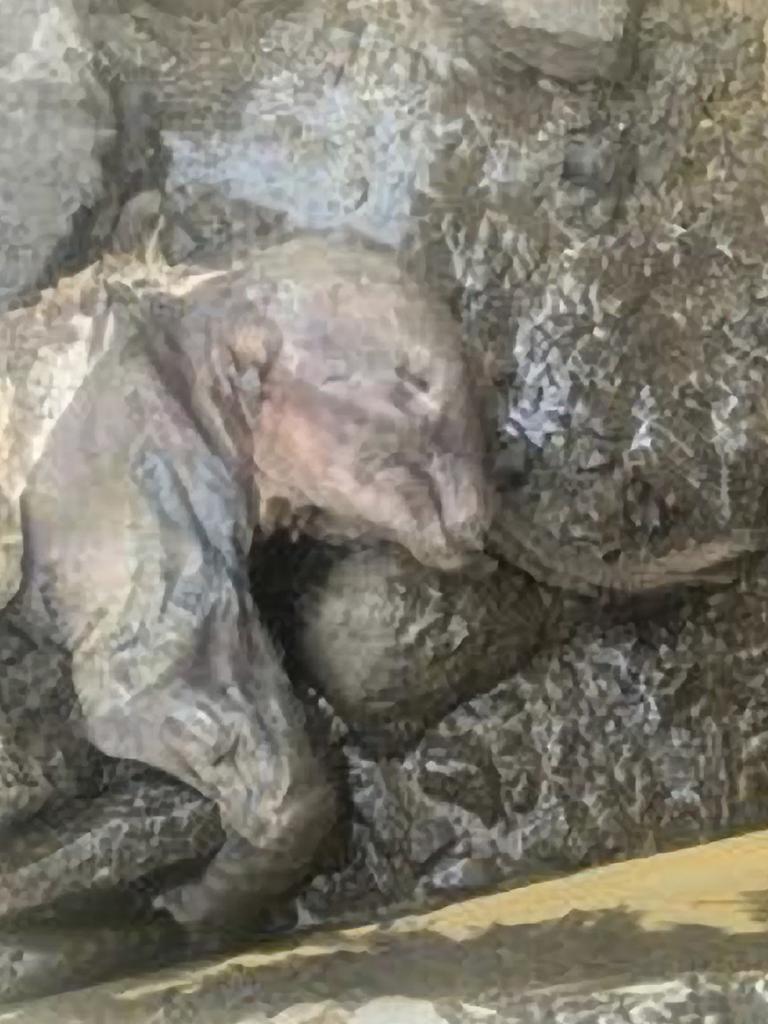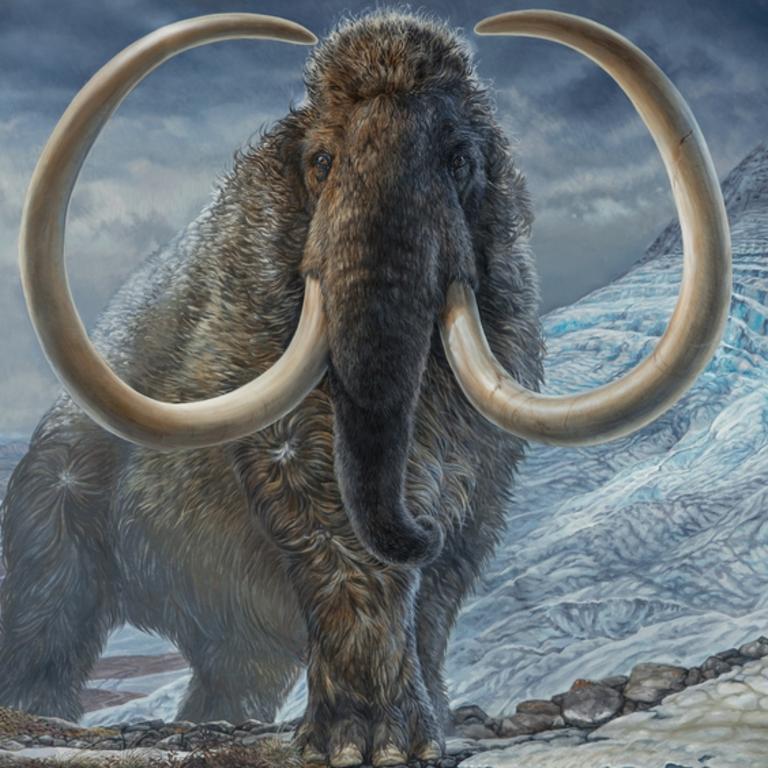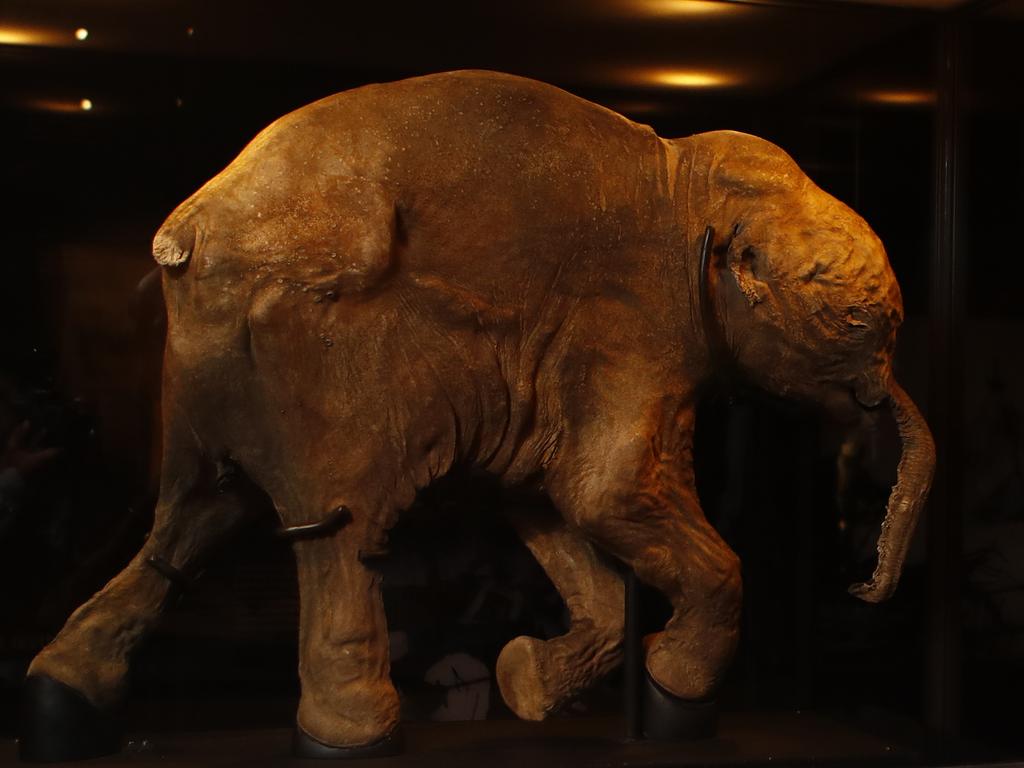Ice Age infant mammoth found mummified in Yukon gold fields
A near-complete infant woolly mammoth has been found mummified in Canada’s far north Yukon territory, complete with hair and skin preserved in permafrost for over 30,000 years

READING LEVEL: GREEN
Canadian gold miners have made a rare discovery, digging up the mummified* remains of a near-complete baby woolly mammoth.
The mammoth calf, which still has its hair and skin, has been named Nun cho ga, or “big baby animal”, by members of the local First Nations community.

Palaeontologist* Dr Grant Zazula described the baby woolly mammoth as “beautiful and one of the most incredible mummified Ice Age animals ever discovered in the world”.
“I am excited to get to know her more,” he said in a statement.

The animal is believed to be female and would have died during the Ice Age, more than 30,000 years ago when woolly mammoths roamed the region alongside wild horses, cave lions and giant steppe* bison*.

The baby mammoth’s remains were discovered during excavation* through permafrost* in the Klondike gold fields of Canada’s far north.
The gold fields are in Canada’s Yukon territory, which borders the US state of Alaska.

The discovery marks the first near-complete and best-preserved mummified woolly mammoth found in North America.
A partial mammoth calf, named Effie, was found in 1948 at a gold mine in Alaska’s interior.
A 42,000-year old mummified infant woolly mammoth, known as Lyuba, was also discovered in Siberia in 2007.

Lyuba and Nun cho ga are roughly the same size, according to the Yukon government.
It noted that the Yukon has “a world-renowned* fossil record of Ice Age animals, but mummified remains with skin and hair are rarely unearthed”.
GLOSSARY
- mummified: natural or deliberate process of preserving the dead body of an animal or person
- palaeontologist: scientist who studies fossils to learn about the history of life on Earth
- Ice Age: long-term drop in temperature of Earth’s climate, when continental ice sheets and polar ice spread
- steppe: large area of land with grass but no trees
- bison: large, hairy member of the cattle family that was common in America and Europe
- excavation: removing earth covering very old buried objects to discover things about the past
- permafrost: permanently frozen layer of soil, gravel and sand under the Earth’s surface
- renowned: person or place with a positive reputation, usually well known for something good
EXTRA READING
Bold plan to bring woolly mammoths back to life
Tusk tests reveal mammoth’s life journey
Treasure trove of Ancient Egyptian animal mummies
QUICK QUIZ
- What does the name “Nun cho ga” mean?
- How long ago is the baby woolly mammoth thought to have died?
- Where were the remains found in Canada’s far north?
- Where and when was partial mammoth calf “Effie” found?
- How old was the mummified Siberian infant Lyuba?
LISTEN TO THIS STORY
CLASSROOM ACTIVITIES
1. Getting to know the woolly mammoth
Palaeontologist Dr Grant Zazula said, “I am excited to get to know her more,”. What does this mean? How does he plan to get to know a mummified animal?! What information might he hope to find out or want to know?
Write a list of research questions Dr Zazula might be working from.
Time: allow 15 minutes to complete this activity
Curriculum Links: English; History; Science; Critical and Creative Thinking
2. Extension
Why do you think it is rare to find a mummified animal with its skin and hair still intact? What might this mean about where or how it died?
Time: allow 10 minutes to complete this activity
Curriculum Links: History; Science; Critical and Creative Thinking
VCOP ACTIVITY
Stretch your sentence
Find a “who” in the cartoon – a person or an animal. Write it down.
Add three adjectives to describe them better.
Now add a verb to your list. What are they doing?
Add an adverb about how they are doing the action.
Using all the words listed, create one descriptive sentence.

